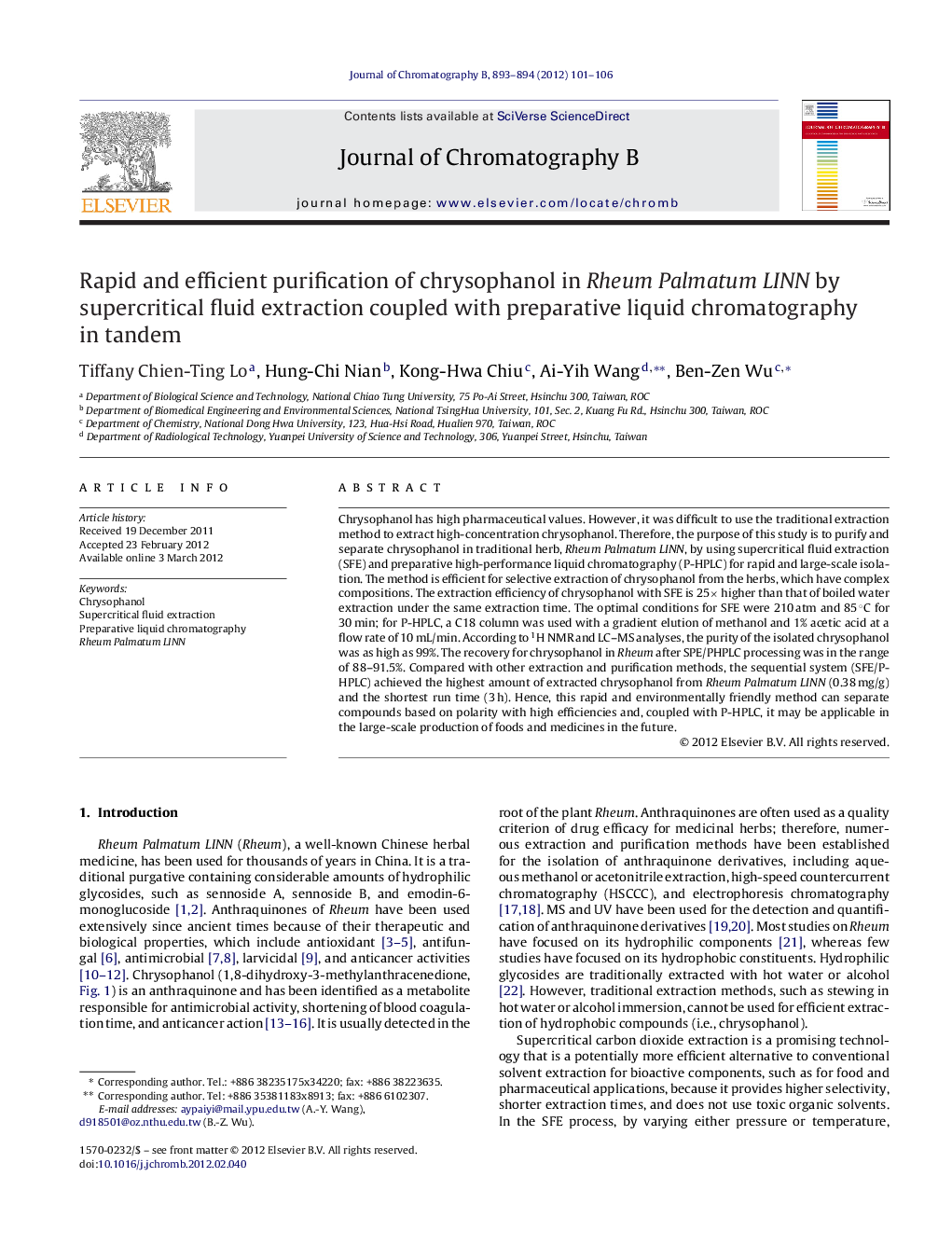| Article ID | Journal | Published Year | Pages | File Type |
|---|---|---|---|---|
| 1214018 | Journal of Chromatography B | 2012 | 6 Pages |
Chrysophanol has high pharmaceutical values. However, it was difficult to use the traditional extraction method to extract high-concentration chrysophanol. Therefore, the purpose of this study is to purify and separate chrysophanol in traditional herb, Rheum Palmatum LINN, by using supercritical fluid extraction (SFE) and preparative high-performance liquid chromatography (P-HPLC) for rapid and large-scale isolation. The method is efficient for selective extraction of chrysophanol from the herbs, which have complex compositions. The extraction efficiency of chrysophanol with SFE is 25× higher than that of boiled water extraction under the same extraction time. The optimal conditions for SFE were 210 atm and 85 °C for 30 min; for P-HPLC, a C18 column was used with a gradient elution of methanol and 1% acetic acid at a flow rate of 10 mL/min. According to 1H NMR and LC–MS analyses, the purity of the isolated chrysophanol was as high as 99%. The recovery for chrysophanol in Rheum after SPE/PHPLC processing was in the range of 88–91.5%. Compared with other extraction and purification methods, the sequential system (SFE/P-HPLC) achieved the highest amount of extracted chrysophanol from Rheum Palmatum LINN (0.38 mg/g) and the shortest run time (3 h). Hence, this rapid and environmentally friendly method can separate compounds based on polarity with high efficiencies and, coupled with P-HPLC, it may be applicable in the large-scale production of foods and medicines in the future.
► We have developed a SPE/P-HPLC system to purify chrysophanol in large quantities. ► The recovery of chrysophanol in the system was in the range of 88–91.5%. ► The purity of the isolated chrysophanol was as high as 99%. ► The SFE/P-HPLC system can isolate non-polar compounds for safer medicines.
